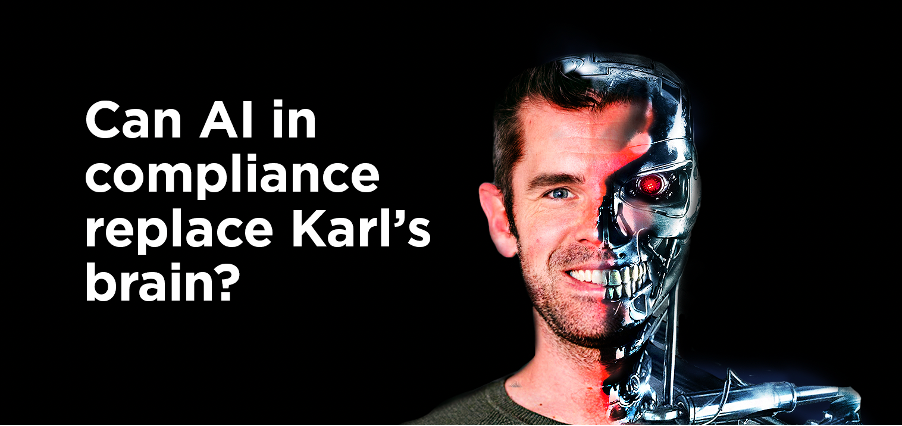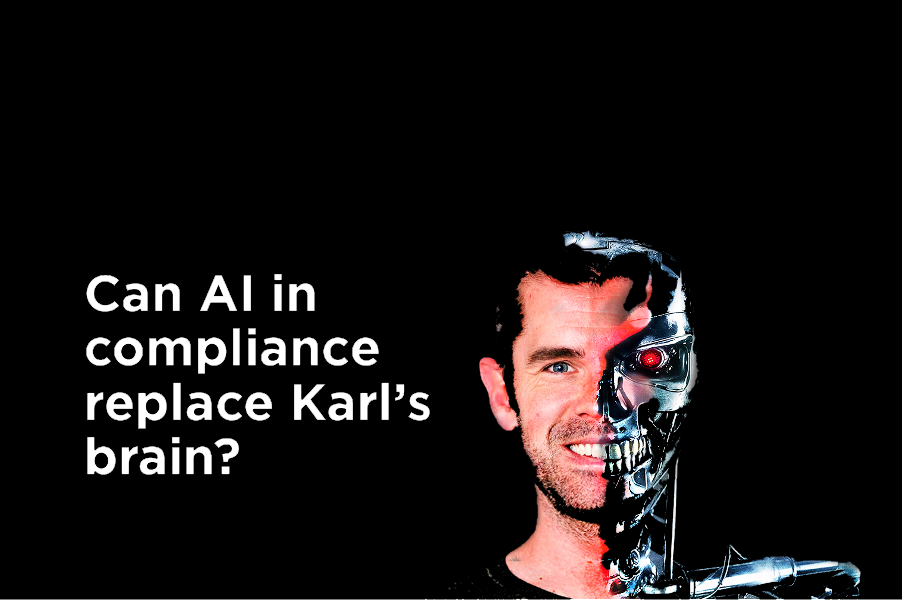Innovative technologies have transformed the financial industry at all levels, and the compliance officer's role is no different. Has the time for the AI Compliance Officer arrived? Will AI replace compliance officers altogether?

Pictured above: Karl Schindler, Lead Regulatory Expert here at FundApps
This is the first in a three part series on artificial intelligence (AI) in compliance.
Regulated firms are required to submit data to regulators through regulatory reports. The format and instructions on how these have to be submitted are set out by the regulators.
Since the global financial crisis in 2008, government regulators across the world have been working to reduce risks in the financial sector to take more control. As a result, regulation in the finance industry has increased significantly.
According to JWG, a London-based think tank estimated that "[…] over 300 million pages of regulatory documents were published by 2020 and over 600 legislative initiatives need to be catalogued by a medium-sized sell-side institution to have a holistic view of their rulebook." The cost and time associated with keeping in line with these excessive regulations, ever shorter reporting deadlines and the growing amount of data, has left many firms struggling to manage global regulatory reporting requirements.
RegTech firms, like FundApps, are at the forefront of augmenting compliance practices by improving the efficiency and effectiveness of existing processes. Excessive, global regulations, ever shorter reporting deadlines and the growing amount of data cannot be reasonably managed with tweaks to antiquated compliance IT solutions written in COBOL (or Excel). Instead, they require innovative solutions such as AI, natural language processing and predictive analytics.
"Compliance is no more than a series of algorithms."
After all, what is regulation but a series of algorithms - codified instructions prescribing dos and don'ts — ifs and thens? But is it that simple? Indeed, there must still be aspects of compliance that require or are better done by humans?
The accuracy and speed at which AI solutions can process vast amounts of data reaps tremendous benefits. However, currently it is primarily used to automate manually intensive and repetitive tasks.

There are arguments around the transparency and governance of algorithms. What if incorrect, sabotaged or misinterpreted data teaches algorithms the wrong lesson? Self-learning algorithms and the flood of data required and accumulated everyday does not allow for sample-based checks, as the patterns may have already changed at the time of the test.
Thus, all checks would have to be retrospective - unless there was a way to stop automated, independent and continuous updates and changes. This in turn, would mean that changes have to be explicitly approved by humans.
The potential applications of AI in compliance and regulatory reporting are numerous. The technology quickly sifts through large amounts of documents and data, preemptively detecting unusual or incorrect patterns and providing meaningful insights from complex data.
Whether at the beginning of a regulatory review, or the end of the compliance process, AI is an invaluable tool which will ultimately lead to a much more streamlined and efficient compliance function. However, as the interface between AI and the real world, humans cannot be replaced, just yet.
We’ll be looking at the UK’s Financial Conduct Authority (FCA) and Bank of England’s joint Digital Regulatory Reporting (DRR) project in an upcoming post. It was launched in 2017 to transform how the financial services industry understands, interprets and reports regulatory information.
While the global regulatory community is supportive of the DRR initiative, the implementation of a global uniform standard is not to be expected anytime soon. The approach to the use of AI is still being evaluated and accepted differently.
How realistic is it to expect the global regulatory community to agree on which data sources may be used for which purposes and how the algorithms required for use can be regulated and monitored?
Wondering how FundApps uses AI to enhance our automated compliance services? Then get in touch!
Stay tuned for part 2, on the FCA’s DRR project and part 3, on AI in Shareholding Disclosure 👀
